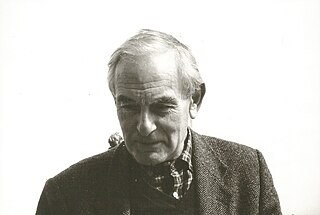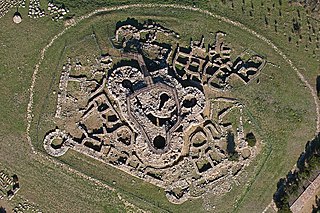Mauro Cristofani was a linguist and researcher in Etruscan studies.
The primary languages of Calabria are the Italian language as well as regional varieties of Extreme Southern Italian and Neapolitan languages, all collectively known as Calabrian. In addition, there are speakers of the Arbëresh variety of Albanian, as well as Calabrian Greek speakers and pockets of Occitan.
Mario Torelli was an Italian scholar of Italic archaeology and the culture of the Etruscans. He taught at the University of Perugia.

Lucos Cozza was an italian Roman archaeologist.
Canicattini Bagni is a comune (municipality) in the Province of Syracuse, Sicily (Italy), located about 190 kilometres (120 mi) southeast of Palermo and about 20 kilometres (12 mi) southwest of Syracuse. As of 31 December 2004, it had a population of 7,415 and an area of 15.1 square kilometres (5.8 sq mi).

The Este culture or Atestine culture was an Iron Age archaeological culture existing from the late Italian Bronze Age to the Roman period. It was located in the present territory of Veneto in Italy and derived from the earlier and more extensive Proto-Villanovan culture. It is also called "civilization of situlas", or Paleo-Venetic.

The Gaudo Culture is an Eneolithic culture from Southern Italy, primarily in the region of Campania, active at the end of the 4th millennium BC, whose typesite necropolis is located near Paestum, not far from the mouth of the river Sele. Its name comes from the Spina-Gaudo necropolis.

The Remedello culture developed during the Copper Age in Northern Italy, particularly in the area of the Po valley. The name comes from the town of Remedello (Brescia) where several burials were discovered in the late 19th century.
The Laterza culture or Laterza-Cellino San Marco culture is an Eneolithic culture in Southern Italy. It takes its name from the tombs discovered in the locality of Laterza, near Taranto, and Cellino San Marco, near Brindisi, in Apulia. It developed in Apulia and Basilicata, and to a lesser extent of Central Italy in the 3rd millennium BC, around 2950-2350 BC. As with many of the cultures of the late prehistoric period, it is known essentially from the style of pottery recovered from archaeological digs. The culture was defined in 1967 by Francesco Biancofiore, following research in a necropolis of the same name situated to the north-west of the city of Taranto, in southern Apulia.

Marsiliana, known also as Marsiliana d'Albegna, is a village in Tuscany, central Italy, administratively a frazione of the comune of Manciano, province of Grosseto. At the time of the 2001 census its population amounted to 246.

The Polo Museale del Lazio is an office of Italy's Ministry of Cultural Heritage. Its seat is in Rome in the Palazzo Venezia.

Rofalco was a fortified late-Etruscan settlement, located about twenty km north of Vulci, at the edge of the Selva del Lamone volcanic plateau. The site controlled the important natural route formed by the valley of the Olpeta stream and contributed to the defense and the organization of the southeastern portion of the ancient territory of Vulci.

Su Romanzesu is an archaeological site that is located near Bitti, Nuoro Province, Sardinia.

The necropolis of Is Loccis-Santus is an archaeological site located in the municipality of San Giovanni Suergiu, Sardinia.

The nuraghe Genna Maria is an archaeological site in the comune of Villanovaforru, province of South Sardinia.

The necropolis of Santu Pedru is an archaeological site of the municipality of Alghero, Sardinia.
Maria Bonghi Jovino is an Italian archaeologist. Bonghi Jovino was Professor of Etruscology and Italic Archaeology at the University of Milan.

Municipio Roma VII is the seventh administrative subdivision of the Municipality of Rome (Italy).
Guglielmo Maetzke was an Italian archaeologist and etruscologist. A pupil of the Etruscologist Massimo Pallottino, he directed important excavation campaigns in Tuscany, Lazio, Campania and Sardinia.

The Menhir Museum, or Civic Archaeological Museum of the Menhir Statues, located in the Aymerich Palace in the village of Laconi, is a unique museum of its kind for its rich collection of steles found in the Laconi area, with the first discovery in 1969.















